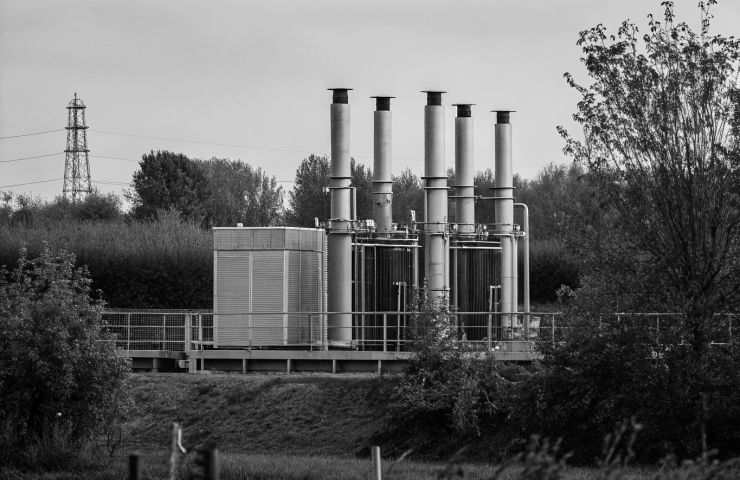
UKOG Raises £1M to Fuel Hydrogen Production Drive
October 7, 2025They say you can’t teach an old dog new tricks—unless there’s a hefty cheque involved. On October 3, 2025, UK Oil & Gas PLC (UKOG) quietly launched a direct subscription of new ordinary shares at 0.03p each, banking £1 million to turbocharge its hydrogen production ambitions (via LSE RNS).
Major Capital Injection
Sure, one million quid doesn’t make headlines for a seasoned North Sea player. But for a micro-cap trading at pocket change per share and trying to swap drilling rigs for electrolyser stacks, it’s a clear shot across the bow. The raise matched the 0.03p price tag from earlier this month—no special discounts, no complicated ratchets. Investors snapped shares at face value, sending a signal: they believe in the green hydrogen pivot.
Doing a direct subscription is like taking the express lane—no broker fanfare, fewer hoops to jump through, lower fees. For UKOG, it’s about speed and simplicity: get the cash in, fire up the labs, kick off those electrolysis trials, and stake a claim in the UK’s race for a robust hydrogen infrastructure.
This marks UKOG’s third straight direct raise at 0.03p in six weeks. That consistency keeps the market calm, but it also raises the eyebrow: is this price floor a safety net—or a ceiling?
Why It Matters
The UK government has earmarked hydrogen as a cornerstone of its net-zero playbook—something to decarbonise heavy industry, juice up clean transport, and store excess renewables. And when we’re talking top-shelf hydrogen, green hydrogen made via electrolysis is the gold standard. UKOG’s latest haul is squarely aimed at proving they can operate in that sandbox.
Low-carbon hydrogen isn’t a pipe dream—steel mills, chemical plants, even bus fleets are licking their lips for supply. Locking in funding now gives UKOG breathing space to pilot projects, perfect their catalyst coatings, and crank up small-scale capacity before the deep-pocketed players elbow in.
Beyond emissions, hydrogen is reconfiguring the energy security debate. The UK, once brimming with North Sea gas, now leans on imports. Local electrolysis powered by renewables could slash bills, trim dependency on foreign suppliers, and steady energy costs. A solid green hydrogen asset could turn UKOG from a commodity rollercoaster into a business with predictable offtake contracts.
Still, some big questions hang in the air: can UKOG lock down cheap renewable power at scale? Will zoning, grid hookups, and planning permissions march to their aggressive timeline? Getting those ducks in a row is mission-critical before they chase mega-project glory.
Under the Hood
Here’s the nuts and bolts: UKOG created new ordinary shares priced at 0.03p each, exactly mirroring its earlier equity raises. No sugar-coating with warrants, no sweeteners—just plain-vanilla equity. Existing shareholders will face some dilution, but the company sidestepped the risk of a fire-sale discount.
Direct subscriptions usually appeal to insiders—high-net-worth folks and boutique green-energy funds comfortable with micro-cap risk. UKOG hasn’t named names, but sticking to the same pricing suggests the core backers are back in the game, rather than a horde of fresh faces.
Regulatory nods via the London Stock Exchange’s Regulatory News Service confirm UKOG has dotted all the i’s and crossed all the t’s. That kind of compliance can calm jittery investors and regulators. It’s a swift, stealthy strategy, but it might leave blue-chip institutions wanting more transparency before they dip their toes.
Strategic Pivot
Once all about rigs and wells, UKOG has been quietly building a derail for hydrogen since 2022. Their R&D division has been busy running pilot electrolysers and scouting demo-plant sites, testing membrane longevity and system integration under real-world conditions.
Inside the company, the roadmap splits into three phases: early R&D, pilot demos, and full-blown commercial rollout. This £1 million is earmarked mainly for phase one and the early bits of phase two—think lab-scale stacks, site assessments, and initial permitting. It’s a shoestring operation, but if they can show feasibility, they’ll be in a better spot when chasing the big money.
On the national stage, the UK wants 5GW of electrolytic capacity by 2030 as part of its 2050 net-zero pledge. Competitors include oil giants morphing into energy firms and pure-play hydrogen startups with fat war chests. UKOG’s angle is to stay nimble, strike smart partnerships, and avoid being devoured by the majors.
Partnerships could be a game-changer. UKOG’s in talks with UK and EU membrane developers to lock down favourable pricing or royalty-sharing on catalyst breakthroughs. Nail those deals, and they could trim the big upfront costs that trip up so many newcomers.
Industry Ripples
Don’t let the modest sum fool you—it’s a flare shot across the energy sector. Investors are still ready to back hydrogen bets, even when markets are jittery. That could spur mid-tier explorers to launch their own cash calls, sending ripples through the wider energy market.
On the ground, £1 million won’t bankroll a grid-scale electrolyser, but it will cover feasibility studies, pilot units, and early-stage permits. That’s enough to create clean-energy jobs, fuel orders for steel fabricators and power-electronics firms, and inject some momentum into local hydrogen clusters.
Policy wonks and regional councils are watching closely. A successful pilot can grease the wheels of planning committees, smoothing the path for bigger installations. That, in turn, accelerates regional decarbonisation targets and feeds neatly into the national net-zero playbook.
The Maverick Take
Let’s be blunt: in hydrogen terms, this is baby money. You need tens, if not hundreds, of millions to swing at grid-scale projects. But this isn’t fluff—UKOG isn’t funding a slide deck tour; they’re paying for lab coats and hardware.
Will £1 million spark a transformative shift? Not by itself. Real progress hinges on follow-on rounds or alliances with cash-rich utilities and tech partners. If UKOG can nail anchor offtakes—say, selling hydrogen to a nearby chemical works or a fleet of fuel-cell buses—they’ll have the proof points to pull in bigger cheques.
Micro-cap swagger only gets you so far in a team sport like hydrogen. You need policy support, offtake contracts, grid connections, and enough capital to ride out steep learning curves. UKOG doesn’t have Shell or BP’s deep pockets, so they must lean on ingenuity and partnerships—or risk half-built plants gathering dust.
But there’s a glimmer of hope. Sub-10MW demos can move much faster than the leviathans, and UKOG’s lean setup could outpace majors bogged down by corporate red tape. If they carve out a niche—industrial clusters, remote storage solutions, or refuelling hubs—they could show that small caps can punch well above their weight.
Looking Ahead
The next milestone is UKOG’s Q4 project update, where they’ve promised details on location and tech. That’ll be the real litmus test. A vague communiqué will kill the buzz; a solid pilot backed by third-party validation could light a fire under the market.
It’s time to move from talk to shovel-ready action. Otherwise, this £1 million will look like pocket change while the sustainable energy train speeds past. Hydrogen isn’t waiting, and nor should they.



 With over 15 years of reporting hydrogen news, we are your premier source for the latest updates and insights in hydrogen and renewable energy.
With over 15 years of reporting hydrogen news, we are your premier source for the latest updates and insights in hydrogen and renewable energy.